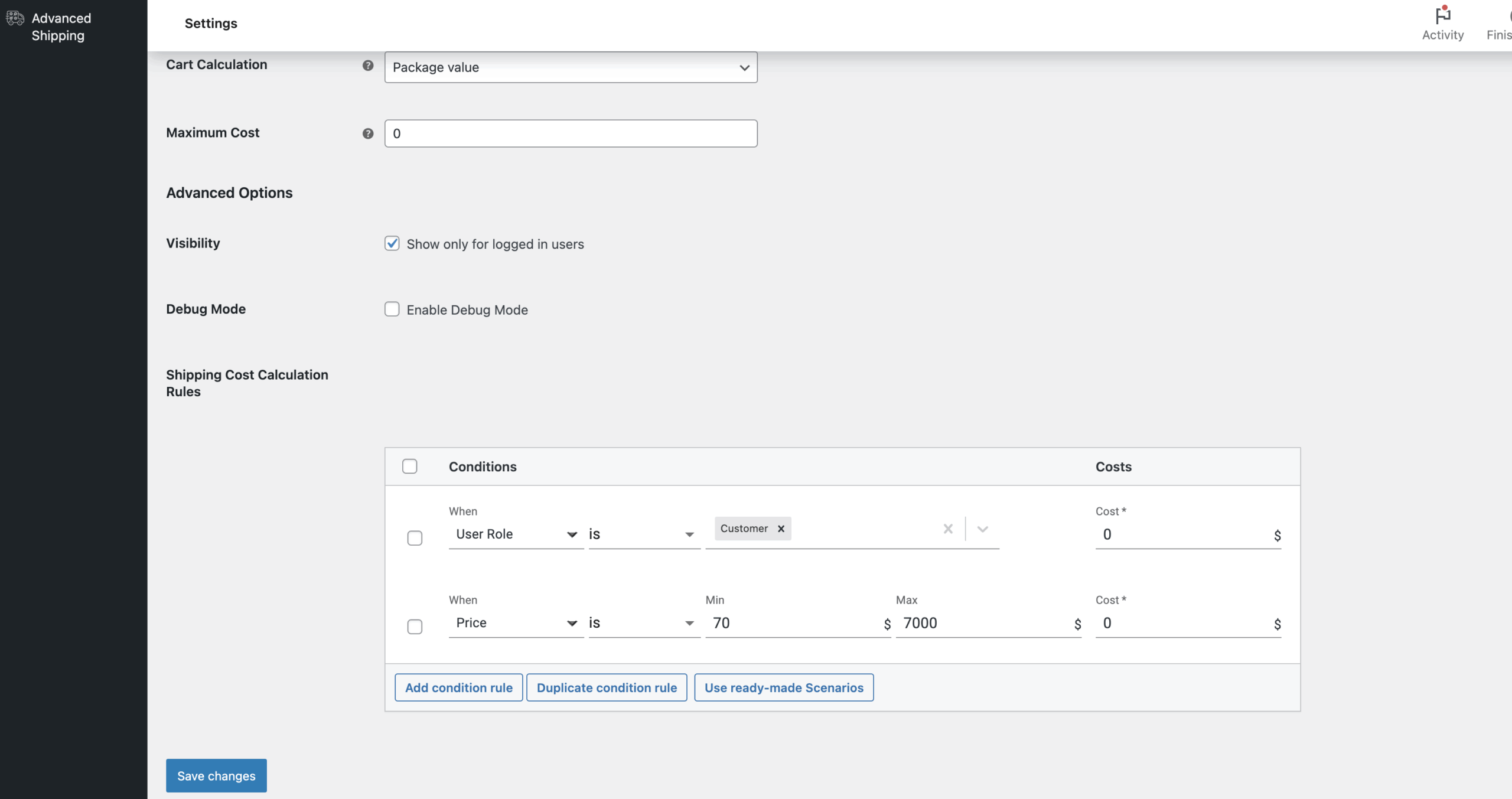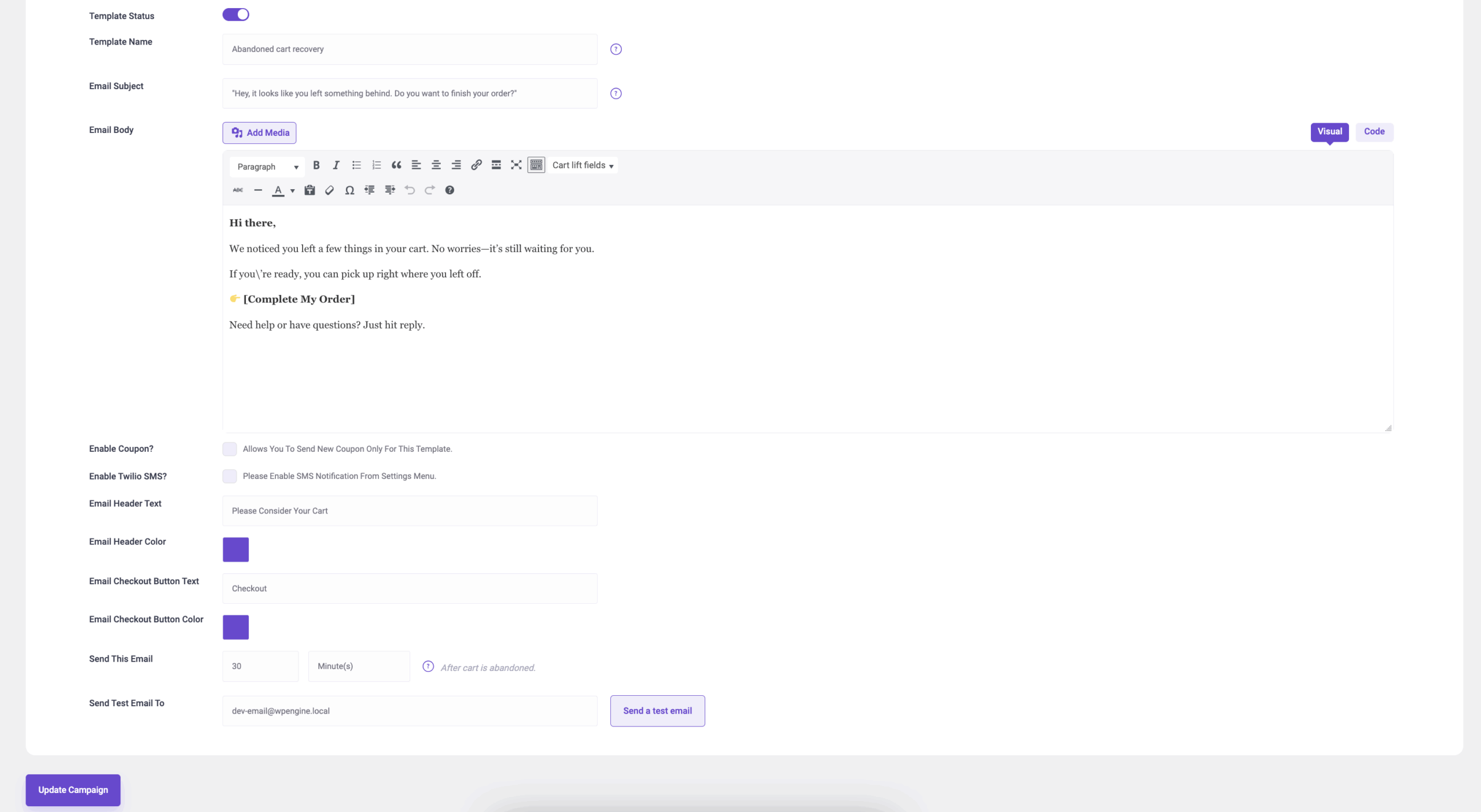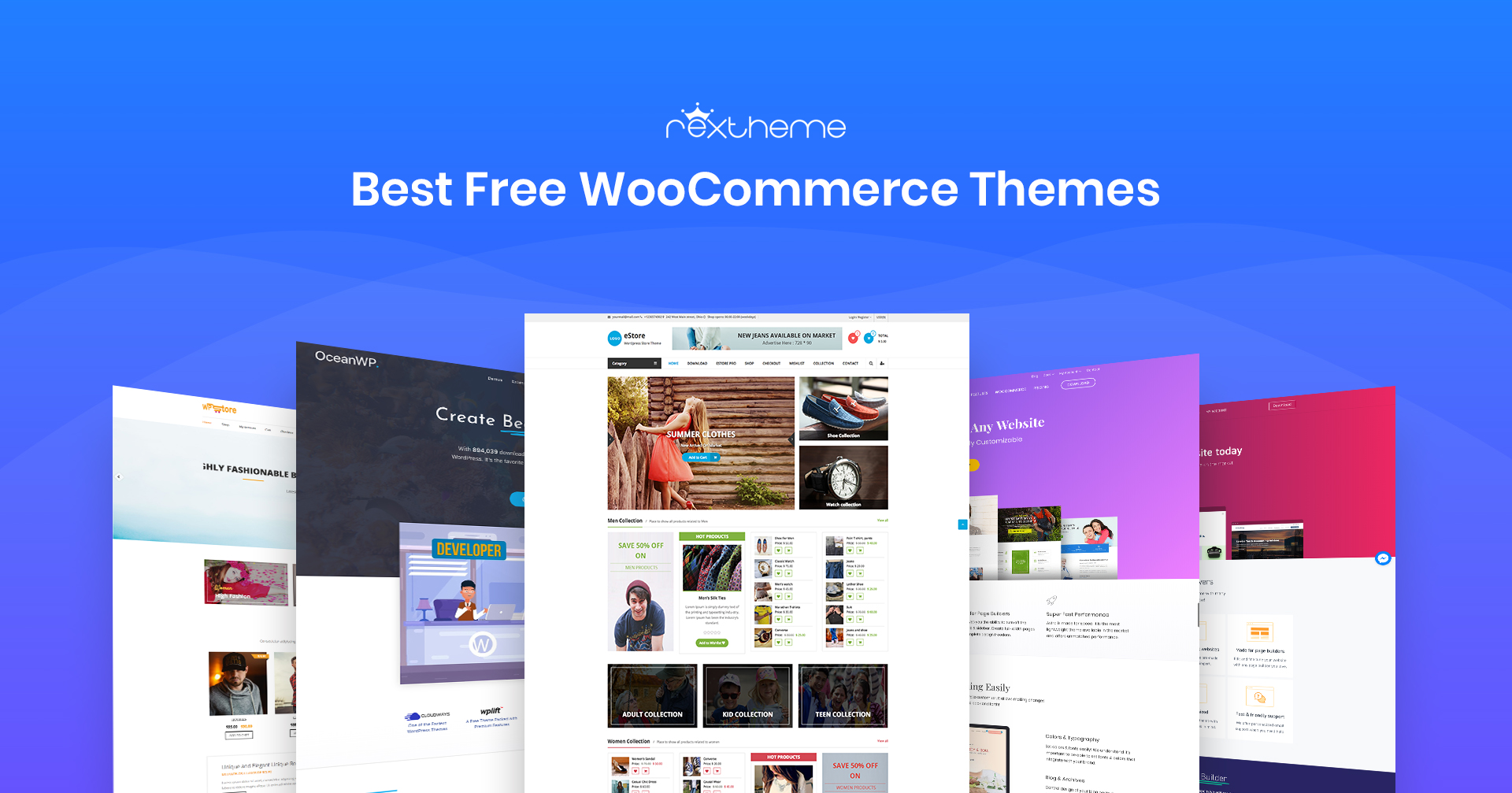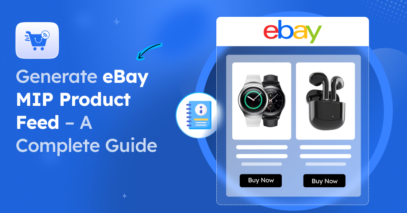Most people think marketing is all about acquisition—more traffic, more leads, more sales.
That’s exactly how I saw growth when I first got into eCommerce marketing. But over time, I realized something crucial: none of it matters if your customers don’t come back.
I’ve seen countless store owners frustrated that their revenue isn’t growing, even after pouring more time and money into ads and content. If that sounds familiar, you’re not alone.
So, how do some online stores continue to grow? What’s the secret?
Here it is: acquisition is just the beginning—retention is what drives real, lasting growth.
In fact, increasing customer retention by just 5% can boost profits by up to 95%.
Today, I’ll share 9 customer retention strategies that have helped several businesses grow, some of which we still use ourselves.
Hopefully, they’ll help you turn more buyers into loyal customers.
Let’s dive in.
TL;DR: 9 Proven Customer Retention Strategies You Can Steal Today
- Retention > Acquisition: Acquiring new customers is costly. A 5% boost in retention can increase profits by up to 95%.
- Make Every First Purchase Count: Turn first-time buyers into long-term customers with thoughtful post-purchase emails (tools like Mail Mint make this easy).
- Reward Loyalty with Smart Perks: Surprise discounts, exclusive free shipping, or location-based offers keep buyers engaged (use Dynamic Discounts + Advanced Shipping for WooCommerce).
- Recover Lost Sales & Keep Conversations Alive: Cart recovery emails and quick post-purchase check-ins prevent churn and drive repeat orders (plugins like Cart Lift do this seamlessly).
- Scale Retention with Automation: From milestone celebrations to easy reorders (hello, WooCommerce Subscriptions), the right tools can quietly build loyalty in the background.
Bottom line: Don’t just chase new traffic. Invest in retention systems that keep your best customers coming back for more.
What Is Customer Retention?
In short, customer retention means getting customers to keep coming back to your brand for repeat purchases. Let me elaborate on that.
When a customer initially purchases from you, you make some money, but you have a lot of additional costs, such as acquisition costs, operational costs, cost of resources, etc.
The majority of this cost goes into promotions and acquisitions.
But if you are able to keep the customers engaged, they may come back and purchase again. This will largely reduce acquisition costs, meaning you make more profit. This is the main concept of Customer Retention.

It means that you, as a business, are able to get your customers to come back and make more or repeat purchases, and eventually, they will become your loyal advocates.
For example, suppose you are selling coffee beans that are of high quality.
If a customer is happy with your product and if you are able to get him engaged with your brand, he may consider getting coffee beans from you every month.
- This means more revenue from the same customer with less effort.
And if you are able to maintain the relationship well, in the long term, he may refer your brand to his friends.
- This means more sales without additional acquisition cost, and more brand value.
Eventually, the number of retained customers will stack and you will have more revenue in addition to the revenue you earn from customers you newly acquire.
The fact is, your existing customers are your biggest growth opportunity. When they come back, they spend more, refer others, and help build a stronger brand.
Why Customer Retention Matters More Than You Think
Now, most people see customer retention as an afterthought, but as I said earlier, it’s actually one of the most effective ways to grow your business.
When you are a startup, your focus should definitely be on acquisition. But once you have acquired a good number of customers, the next step is to start laying down the steps for customer retention. And believe me, it is crucial to do so.
The good news is, retention is more about strategy than expense.
You know, getting new customers takes effort and money. You have to run ads, create content, or give discounts just to bring someone in for the first time. But keeping the customers you already have doesn’t cost as much. Most of the time, a simple follow-up, a helpful update, or good support is enough to keep them coming back.
This diagram will give you a clearer vision.

Consider the following scenario:
Let’s say you run a website to sell courses.
- A customer purchased one of your courses.
- Instead of leaving him be, after a week, you send a thoughtful follow-up email, asking if they were able to learn well from the course. And then recommend some action items to ensure even better learning from the course.
- After two weeks, you send another email where you recommend the next course to take to get even better at their skills. Here, you offer a small discount to take the step.
- If you are able to convey a genuine caring tone in the emails, and if the course was actually helpful, the customer will find it a great gesture and consider getting the second course.
- Similarly, you may follow up from time to time, asking about the status and progress of the customer, while recommending action items and more courses.
- Eventually, the customer will trust your brand over others and start recommending your courses to others. At this point, you no longer need to put effort into bringing back this particular customer. He will keep on coming back and bring in more customers for you.
In this scenario, you need to spend a good amount to acquire the prospect and get him to purchase the first course. Then, you simply spend a little amount on email marketing automation, retargeting ads, personalization, and feedback collection.
These will be enough to slowly nurture the prospect into a loyal customer for long-term repeat purchases and advocacy.
The low cost is just one specific benefit. But there are more.
Let’s look at all the key benefits you get if you set up well-planned customer retention strategies.
1. Lower Acquisition Costs
As I just explained, acquiring new customers can be expensive. But when you focus on keeping your current ones, you spend less money on ads.
For example, in the scenario above, you didn’t need to spend more money to convince your customer to come back. You simply stayed in touch, offered advice, and used a small discount to trigger conversions.
You could add re-targeting Ads to the mix to promote the next course to enroll in with specific targeted messaging. And that’s more than enough to get you repeat conversions.
Besides, re-targeting Ads cost a lot less compared to conversion Ads for new customers. In fact, they are more efficient as the people who visited your site and made a past purchase are more likely to be interested in what you have to offer (i.e., higher chance of conversion.)
2. They Buy More Often – Increased CLV
When customers have a positive experience, they’re more likely to return.
In this case, after receiving your follow-up emails, your customer will be more inclined to make another purchase due to the trust and positive perception you’ve established. And the discount will act as icing on the cake to take the next step.
With proper retention strategies, it is possible to make the same customer spend more and more on your products while your overall cost on that particular customer gets significantly lower.
So you will eventually see a higher customer lifetime value.
3. They Trust You More
The more a customer buys from you and gets value, the more trust they develop in your brand.
You simply have to find out proper strategies to stay in touch without annoying them, keep delivering value, and maintain the high quality of your products and services.
The scenario we explained earlier was a customer retention strategy to initially build trust through nurturing, and then trigger the next conversion.
When a customer feels they can rely on you, they don’t hesitate to make a purchase the next time they need something.
4. Increased Compound Revenue Growth
As you build up loyal customers who keep on making repeat purchases, you will start to see compound growth in revenue over time.
Every month, you will get revenue from your old customers, plus revenue from new customers. This will slowly start to stack and you will see monthly compound growth over time, eventually becoming similar to large online stores that are already making money from the same process.
**This approach is easier to plan and forecast because you’re not relying solely on new visitors every month.
5. Free Acquisition Through Referrals
The biggest advantage of having retained customers is that they will spread word of mouth, i.e., free marketing!
Happy customers who have purchased multiple times will actively refer your product/service to people with the same needs. At the same time, you can have them submit public reviews for your products and brand to help build trust and authority among potential prospects
Eventually, all five benefits add up to help you enjoy sustainable growth in the long run.
I believe, by now, you agree with me that you should focus on putting together effective customer retention strategies so that you can scale up your business growth.
But how? What strategies should you use? That’s what you will learn in the next section.
9 Proven Customer Retention Strategies (That You Can Implement Today)
Before I start, I want to stress the fact that implementing customer retention strategies is not complicated.
If you have managed to get people to purchase from you, you’ve already done the hard part. The following are 9 proven strategies you can implement on your current website to optimize customer retention.
However, I want you to understand that I will not make any false promises.
No retention strategy can make you rich or 10x your revenue in an instant.
These strategies are rather built to ensure you have reduced customer drop-offs and increased long-term returning customers. So, the benefits will be gradual, but stack up to something great in the long run.
Now, let’s dive into the strategies.
1. Welcome First-Time Buyers Into Your Brand
When someone buys from you for the first time, it’s your chance to turn that single order into a long-term relationship.
And no—you don’t need to hit them with flashy promos or pushy upsells. What actually works is just making them feel like they matter.
Let’s say someone orders a handmade soy candle from your shop.
You must not want to go silent after the purchase, or hit them with a big “Buy More!” campaign.
Instead, start with a short email series that sounds like it’s coming from a real person, not a brand.

After that first warm welcome email, you can follow up with a short email series—2 or 3 emails max—spread out over several days. Start by keeping the tone casual and supportive, like you’re just checking in. Then, by the third email, about five days in, you can gently introduce a small discount to encourage a second purchase.
This way, they feel like part of your brand.
You can try using Mail Mint, which lets you create and run email series in an easier way.
Watch this video to learn the details about the email automation process using Mail Mint.
2. Reward Returning Customers with Thoughtful Perks
You don’t need a massive loyalty program to make people feel appreciated. Sometimes, just a small, well-timed gesture can do the trick. Whether it’s a surprise discount, free shipping, or perks based on where your customer lives, these thoughtful touches add up.
Let’s break this down into a few simple ways you can reward repeat customers without overcomplicating it.
i. Offer Exclusive Discounts to Returning Buyers
When someone places that second or third order, that’s your cue to acknowledge them. They’re not just passing by, they’re choosing you.
So instead of saving your best deals for first-time buyers, flip the script. Give returning customers a reason to keep choosing your store.
Let’s say you run an online clothing store. A shopper buys a couple of items in spring, then comes back in summer for another look. This is your chance to automatically offer a 10% “thank you” discount, where no coupon code is needed. It’s a nice surprise and a simple way to say, “We see you, and we’re glad you’re back.” You can also nudge them by adding a 7-day expiration window.
That little time limit gives them just enough urgency to come back without feeling pressured.
To set up a discount like this, you can consider using Dynamic Discounts for WooCommerce, which offers setting up multiple discounts in an easier way.

And the best part is, your customers will feel appreciated for their loyalty, which means they’re more likely to keep coming back.
Watch this video if you want to learn more about the conditional discounts you can create using this tool.
ii. Offer Free or Discounted Shipping to the Returning Customers
Free shipping doesn’t need to be for everyone. When you make it feel like a reward, it works better for retention.
Start with your repeat buyers. If someone has made a purchase or created an account, offer free shipping on their next order, or give a shipping discount once they hit a certain order amount.
The point is to make shipping feel like a thank-you, not just a sales tactic. You’re showing appreciation and giving people a reason to come back without having to lower your prices across the board.
You can set this up easily using Advanced Shipping for WooCommerce, just define the rules based on purchase history, customer role, or product category, and you’re set.

You can create free shipping coupon as well using this plugin. Here’s how-
iii. Personalize Shipping Based on Where They Live
Not every customer wants the same thing, and that includes shipping. If someone’s local, they expect it fast. If they’re further out, they want it to be affordable. When you match your shipping options to where people actually live, it feels like you’re paying attention.
Here’s how to do it right:
- Show faster delivery options for customers near your warehouse.
- Offer flat-rate or free shipping for specific regions.
- Run location-based promos like: “Free shipping to Florida this weekend.”
Keep it simple, but make it feel thoughtful. You’re not just delivering products, you’re making the process smoother based on what makes sense for them.
Advanced Shipping for WooCommerce lets you create this free shipping offer as well. You’ll be able to create smart shipping rules without touching code.

Once you’ve set this up, make sure to mention it in your post-purchase emails or loyalty campaigns.
When customers are reminded that they’ll continue getting faster or cheaper shipping just because of where they are, they have a reason to stick around. That’s what turns this into a solid retention strategy.
3. Turn Post-Purchase Silence Into Repeat Sales
Just because someone made a purchase doesn’t mean they’ll come back. In fact, most first-time buyers go quiet—and that silence usually means they’re unsure, distracted, or simply forgot about you.
This is where a quick check-in can make a big difference.
Let’s say someone orders a reusable water bottle from your store. A week after it’s delivered, check in with a short email: “Hey! just wanted to make sure your bottle arrived safely. Everything good so far?”
You’re not trying to sell anything here. Just showing that you care. You can keep it super simple with a thumbs-up/thumbs-down button or a quick 1-to-5 rating link.
If they respond and say everything’s great? Tag them as happy customers. That way, a few days later, you can send them something they’ll likely care about, like a matching insulated lunch bag or a cleaning brush made just for their bottle.
If someone replies saying the cap is leaking or they had issues, follow up fast. Fix the problem, then hold off on marketing until they’re happy again.
The point is: this isn’t just about pushing products. You’re keeping the conversation going so your brand doesn’t fade the second the package hits their doorstep.
When they’re ready to shop again, you’ll already be in their inbox for the right reasons.
4. Turn Checkout Into a Retention Touchpoint
After a customer adds their payment info, they’re already in buying mode. That makes the checkout page a smart place to plant the seed for the next purchase.
You don’t need to do much. A simple pop-up or message offering 10% off their next order is enough. Or you can invite them to join your email list for early access to future deals.
If someone just bought a fitness tracker, show them an offer for 15% off accessories like workout bands or chargers.
You can set this up with Checkoutify in an easier way.

You’re not pushing them to buy again right away. You’re giving them a reason to think about it.
5. Proactively Solve Customer Issues Before They Arise
Right after the sale, customers are the most alert. That’s when they run into small hiccups, so don’t wait for them to ask for help.
If your product needs setup,
- Send a short how-to email right after the purchase. Keep it short, just enough to help them get started without friction.
- Add common FAQs to your post-purchase emails so they don’t have to search your site or reach out for answers.
- Make sure your support options are easy to spot. Live chat, help docs, or a visible email, any of these can make someone feel supported right away.
Solving issues before they arise shows you’re focused on the experience, not just the sale.
6. Recover Abandoned Carts and Re-engage Lost Customers
You know how people often add items to their cart and then leave without completing the purchase? Well, that happens a lot, around 70% of the time.
But the good news is, you can recover a lot of those abandoned carts with a simple follow-up email.
You don’t have to send a bunch of emails. Just one or two, at the right time, can do the trick.
For example, if a customer adds some items to their cart and doesn’t check out, send them an email within 30 minutes. You could say something like, “Hey, it looks like you left something behind. Do you want to finish your order?”
In this case, you can give a try on Cart Lift, which will let you set up this abandoned cart recovery email that triggers automatically whenever someone abandons their cart.

It’s simple, and it works. Have a look at this video for clearer insight.
7. Collect Customer Feedback, Then Actually Work On It
Once you’ve made the post-purchase experience easier, the next smart move is to ask what could still be better.
Keep it simple. After someone buys, send a one-liner: “What could’ve made this better?” You don’t need a long survey.
Then, actually use what they say. Pick one piece of feedback each month, make a change, and tell people about it.
Send a short update in your newsletter or in a follow-up email— “You said our size charts were confusing, so we updated them.”
If someone gave that idea, mention them by name: “Thanks to Jane for the feedback.”
That kind of follow-up shows you’re listening. It gives people a reason to keep engaging with you.
8. Celebrate Milestones—Without the Fancy Setup
You don’t need a full-blown loyalty program to make customers feel like they’re part of something. Forget the complicated point systems or multi-level tiers. Just mark the moments that matter and keep it simple.
Here’s one way to do it:
- After their third order, send a thank-you note with a small discount.
- At five orders, toss in a surprise gift.
- Let them know what’s coming next—without making it feel like a corporate pitch.
It’s about giving them a reason to smile when they check their inbox.
Say, someone’s been quietly coming back to your store every couple of months. When that third order comes through, they get a message that says, “Hey, thanks for sticking with us. Here’s a little something for next time.”
That’s all it takes. You don’t need new software to make this happen—just a simple purchase tracker and a short email flow.
And when you keep showing up like that—predictable, personal, and low-key—people notice. They’re more likely to come back for orders four, five, and beyond… not because of what you’re offering, but because they feel seen.
9. Make Reordering Quick and Easy for Loyal Customers
Sometimes your best customers don’t need a sale, they just need a reminder.
If you’re selling products that people buy again and again such as vitamins, pet food, and skincare, make it ridiculously easy to reorder. One of the simplest ways to do that is to send a friendly reminder a few weeks after their last purchase.
There’s no need for a pitch, just a quick note with a direct link to restock. Even better if it takes them straight to the product or a cart that’s already filled in.
The fewer clicks, the faster they convert.
A solid example of this in action is the Arogga app. If you’ve ever ordered medicine through them, you know how simple they make it. They just send a quick reminder when it’s time to refill, and just like that, you’re one tap away from placing the order again.
If you want to take it further, set up a monthly recurring order option using WooCommerce Subscriptions.
That way, customers don’t even need the reminder, it just shows up when they need it.
Wrap Up
You don’t need to roll out every strategy at once. Start with one or two that are easy to implement, like cart recovery and post-purchase emails. These give you quick wins and help build a foundation.
Once you’ve got those working, layer in others. Try offering rewards, using feedback to group your audience, or sending more personal follow-ups.
Retention isn’t about being flashy. It’s about building small systems that run in the background and keep people coming back. Just keep adding to what’s working, one step at a time.
FAQs
1. How can businesses effectively manage their existing customer base?
Implementing robust customer retention management practices, such as personalized communication and loyalty programs, helps maintain strong relationships with existing customers.
2. Can you provide real-world examples of successful customer loyalty initiatives?
Customer retention examples include companies offering exclusive discounts or early access to new products for repeat buyers, fostering a sense of appreciation and loyalty.
3. Why is it important to focus on retaining customers rather than solely acquiring new ones?
Understanding what is customer retention emphasizes the value of nurturing existing relationships, which often leads to increased lifetime value and cost savings compared to acquiring new customers.
4. What are some practical methods to keep customers engaged over time?
Utilizing customer retention tools like CRM systems and feedback platforms enables businesses to monitor customer interactions and tailor experiences to enhance engagement.
5. What strategies can help in reducing customer churn rates?
Employing customer retention tools such as automated follow-up emails and satisfaction surveys can proactively address issues, thereby reducing churn.
![9 Customer Retention Strategies To Grow Your E-Commerce Business [2025]](https://rextheme.com/wp-content/uploads/2025/04/Customer-Retention-Strategies.webp)


